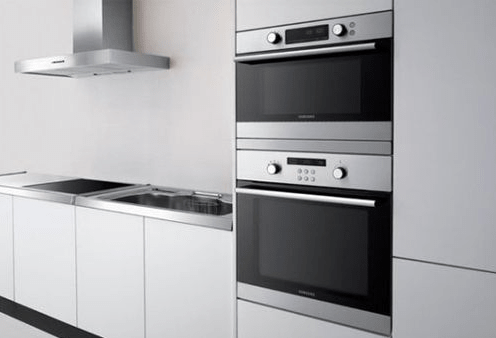
Title: Enhancing Cooking: Learning Commercial Ovens and Ranges
Introduction: Industrial ovens and ranges are the workhorses of professional kitchens, allowing chefs to prepare a variety of dishes with precision and efficiency. From baking and roasting to grilling and sautéing, these essential appliances play a key role in culinary operations. In this discussion, we'll look at the different types of commercial ovens and ranges, including convection ovens, pizza ovens, gas and electric ranges, and their suitability for preparing a variety of foods in commercial kitchens.
- Convection Ovens: Convection ovens are versatile appliances that use fans to circulate hot air evenly around food, resulting in faster, more uniform cooking. Here are some key features and benefits of commercial convection ovens:
- Even Heat Distribution: Convection ovens provide even heat distribution, ensuring food cooks and browns evenly.
- Shorter Cooking Time: Circulating air in convection ovens speeds up the cooking process, reducing cooking time and increasing productivity in commercial kitchens.
- Versatility: Convection ovens can be used for baking, roasting and preparing a wide range of foods, making them a must-have in professional kitchens.
- Energy efficiency: Convection ovens typically use less energy than conventional ovens due to shorter cooking times and less need for preheating.
- Pizza Ovens: Pizza ovens are specialized ovens designed specifically to bake pizza at high temperatures, resulting in a crispy crust and perfectly cooked toppings. Here are some common types of commercial pizza ovens:
- Deck Ovens: Deck ovens have stone or brick cooking surfaces that retain heat and give pizza a unique flavor. They are ideal for making traditional style pizza with a crispy crust.
- Conveyor Ovens: Conveyor ovens use conveyor belts to transport pizza through a heated chamber, allowing for high-volume production and consistent cooking results.
- Wood-burning ovens: Wood-burning ovens are prized for their ability to impart a smoky flavor and crispy crust to pizza. They are popular in upscale restaurants and pizzerias because of their authenticity and handmade appeal.
- Gas Ranges: Gas ranges provide precise temperature control and instant heat response, making them the preferred choice for many chefs due to their versatility and cooking efficiency. They are well suited for sautéing, frying and simmering.
- Electric stoves: Electric stoves are known for their even heat distribution and ease of cleaning. They are ideal for baking and simmering, providing consistent, reliable results in gourmet dishes.
Bottom Line: Commercial ovens and ranges are essential tools for achieving culinary excellence in professional kitchens. Whether you're baking bread in a convection oven, preparing handmade pizzas in a wood-fired oven, or sautéing vegetables on a gas stove, choosing the right equipment is important to achieving exceptional results. By understanding the features and capabilities of different types of ovens and ranges, chefs and restaurateurs can create culinary masterpieces that delight customers and enhance their palate.






